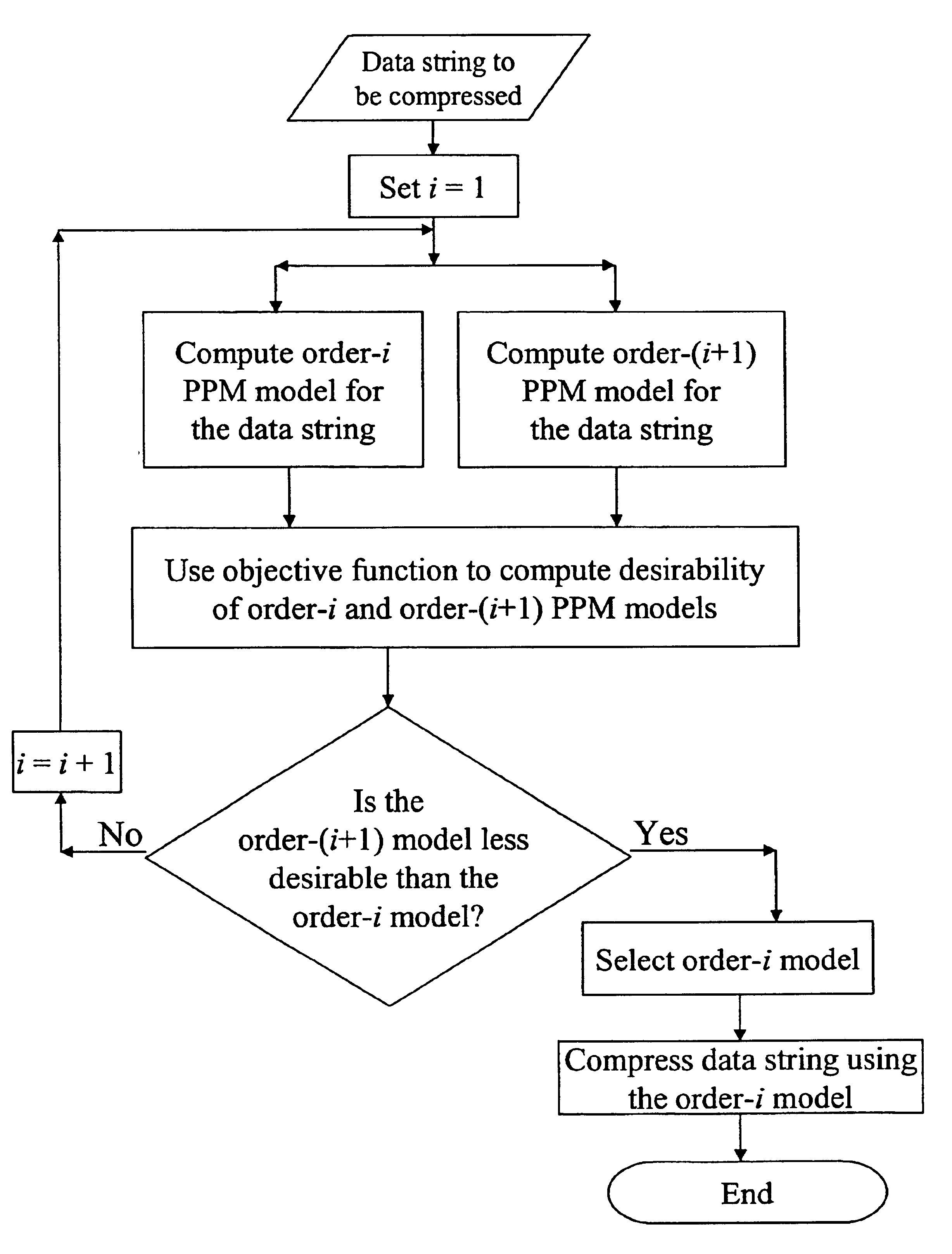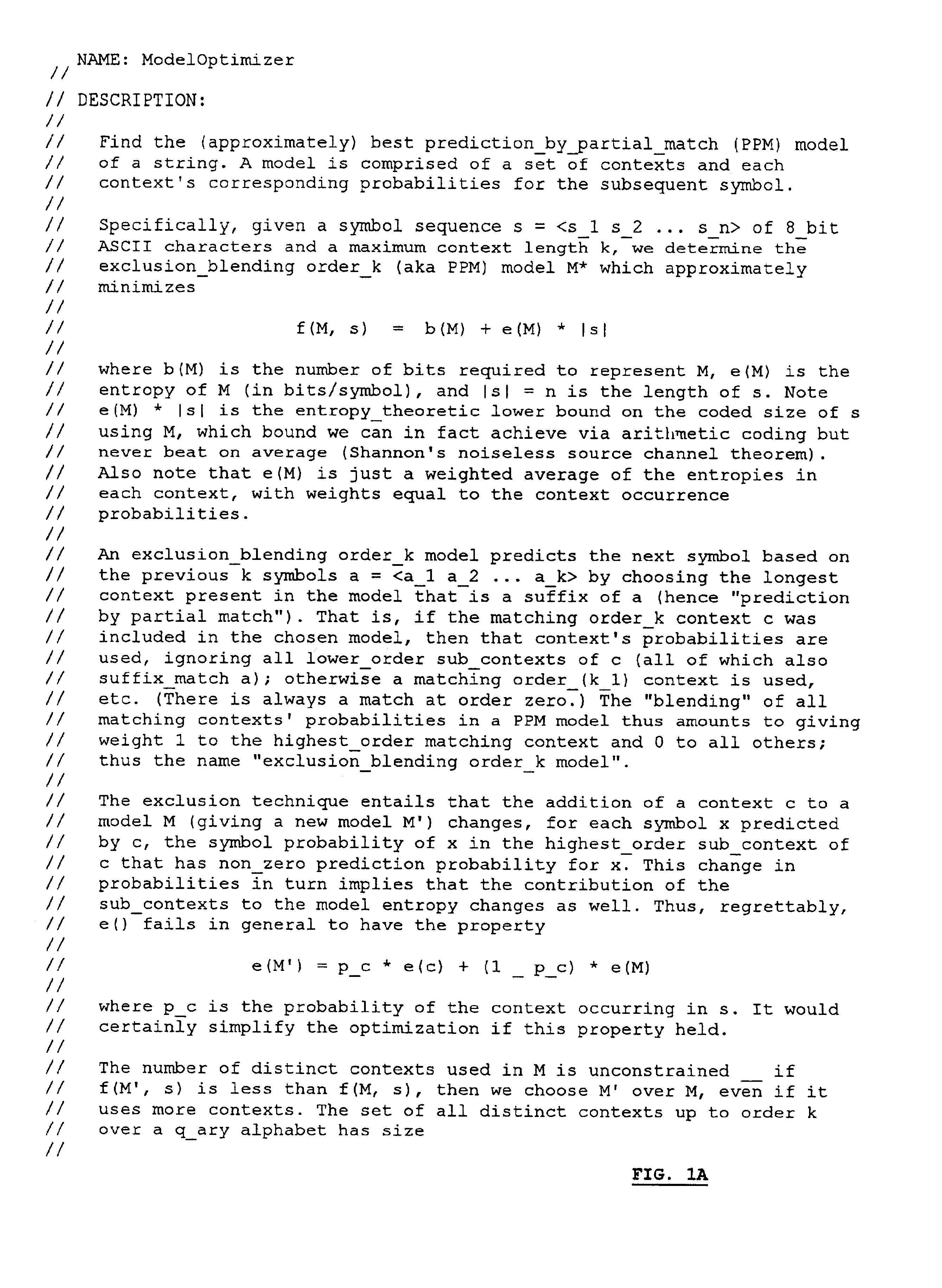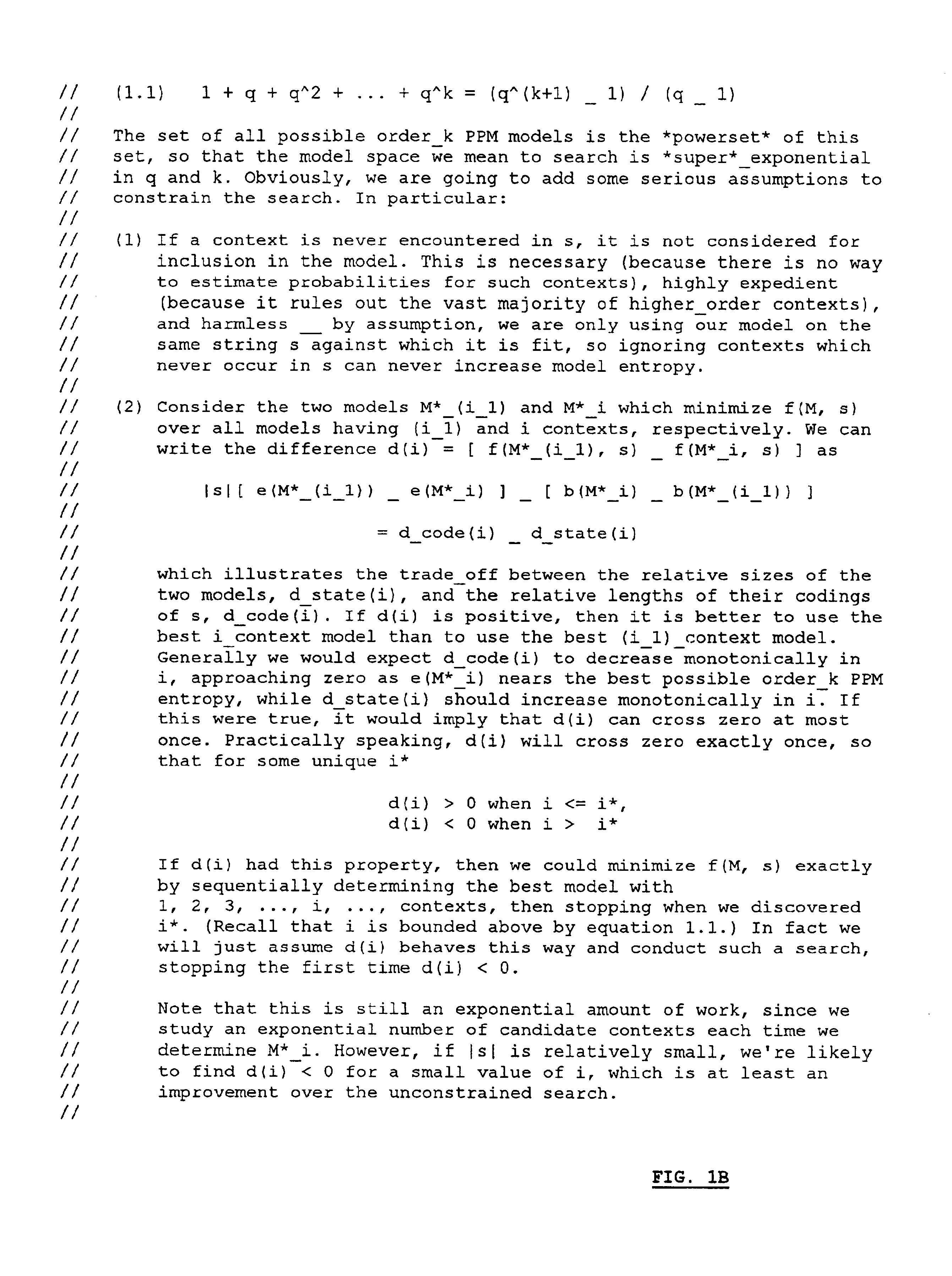PPM-based data compression
a data compression and data compression technology, applied in the field of lossless data compression techniques, can solve the problems of data loss, data loss, and certain errors, and achieve the effect of reducing the computational complexity of ppm-based data compression and speeding up search
- Summary
- Abstract
- Description
- Claims
- Application Information
AI Technical Summary
Benefits of technology
Problems solved by technology
Method used
Image
Examples
Embodiment Construction
[0033]The illustrative embodiment, the source code of which is disclosed in FIGS. 1-10, seeks to find the (approximately) best prediction-by-partial-match model of a string. A model is comprised of a set of contexts and each context's corresponding probabilities for the subsequent symbol. Specifically, given a symbol sequence s=—1 s—2 . . . s_n> of 8_bit ASCII characters and a maximum context length k, we determine the exclusion-blending order-k PPM model M* which approximately minimizes
f(M, s)=b(M)+e(M)*|s|
where b(M) is the number of bits required to represent M, e(M) is the entropy of M (in bits / symbol), and |s|=n is the length of s. Note e(M)*|s| is the entropy-theoretic lower bound on the coded size of s using M, which bound we can in fact achieve via arithmetic coding but never beat on average (Shannon's noiseless source channel theorem). Also note that e(M) is just a weighted average of the entropies in each context, with weights equal to the context occurrence probabilities.
[...
PUM
 Login to View More
Login to View More Abstract
Description
Claims
Application Information
 Login to View More
Login to View More - R&D
- Intellectual Property
- Life Sciences
- Materials
- Tech Scout
- Unparalleled Data Quality
- Higher Quality Content
- 60% Fewer Hallucinations
Browse by: Latest US Patents, China's latest patents, Technical Efficacy Thesaurus, Application Domain, Technology Topic, Popular Technical Reports.
© 2025 PatSnap. All rights reserved.Legal|Privacy policy|Modern Slavery Act Transparency Statement|Sitemap|About US| Contact US: help@patsnap.com



